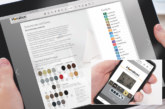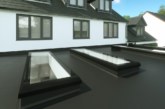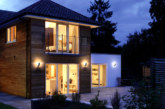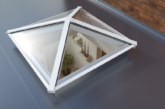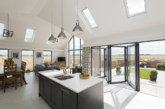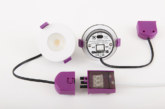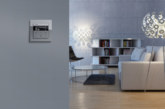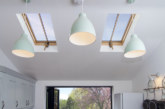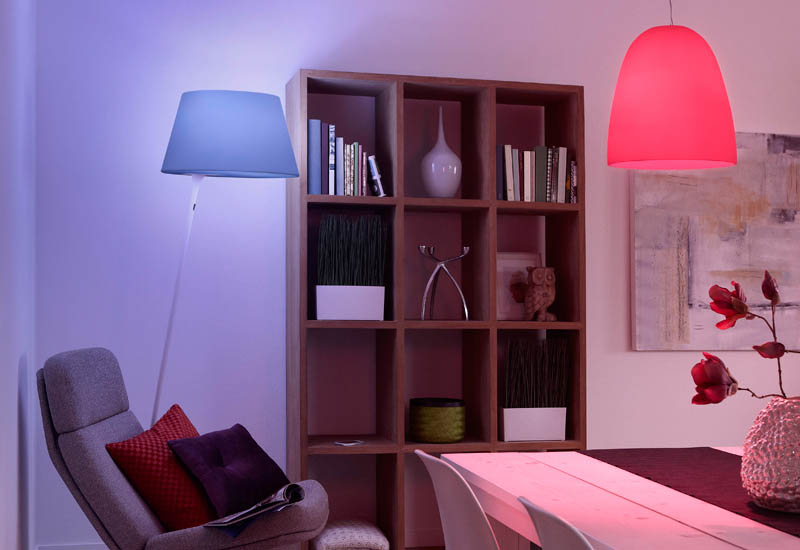
Duncan Chamberlain, Director, Philips Lighting explains how modern lighting has evolved to become fully integrated into the digital age.
Switching on a light is an everyday ritual that we often don’t consider significant. Most of us certainly don’t appreciate that something as simple as the quality of a lightbulb can completely transform our homes and the way we enjoy them. The humble lightbulb, once a commodity, has been transformed by the digital age. As LED lighting increasingly becomes the solution of choice, it’s important to understand how it works and what makes the difference between good LED lighting systems and disappointing ones.
Types of LED lighting
Essentially, there are two types of LED lighting – LED luminaires and retrofit LED lamps. Both make use of individual LEDs grouped together to form an LED module, combined with a number of other components.
With LED luminaires, the LED module is already installed in the luminaire so you are buying a complete package.
“Opt for a warm white to create a soft and relaxing environment but use cool white for task lighting, such as lighting your desk or a kitchen workspace”
Retrofit LED lamps package the LED module in a way that resembles traditional lamps such as GLS (the standard ‘light bulb), halogen spotlights, candle lamps and many more. They also have the appropriate lampholder for fitting directly into an existing fitting.
Not all LEDs are equal
In terms of delivering the required light output, energy performance and operational life it’s important to be aware that not all LED light sources offer the same peace of mind.
For example, variation in colour temperature between individual lamps can result in an unsightly patchwork of colours across the installation. Consequently, how the manufacturer’s quality control procedures ensure a consistent colour temperature is important.
When using LED, consider the colour temperature that is right for the requirements of a space. Opt for a warm white to create a soft and relaxing environment but use cool white for task lighting, such as lighting your desk or a kitchen workspace, where it can actually reduce strain on your eyes by providing bright and clear lighting.
LED standards
In the early days of LED lighting there was a lack of ‘joined-up’ information and standards to check the quality of a particular LED product and compare it with others.
This situation has now changed with the introduction of two new IEC standards – IEC 62717 (for LED modules for general lighting) and IEC 62722 (for LED luminaires for general lighting). These standards cover the full range of aspects such as performance, testing, measurements etc.
Therefore, when selecting products an indication that these standards have been followed is generally a good indication that they are of high quality and designed to a recognised standard.
LED standards – retrofit lamps
When selecting LED lamps to retrofit to existing luminaires the Domestic Implementation Measure (DIM 2) and Label Design Regulations are also useful.
The DIM 2 regulations set minimum performance standards for LED lamps and, just as importantly, harmonise these requirements across all suppliers. This makes it much easier to compare LED lighting products, as long as the information the suppliers provide is accurate.
The Label Design Regulations require certain accurate information to be printed on lamps and packaging, as follows:
- Energy Efficient Labelling (EEL)
- Luminous flux
- Colour temperature in Kelvin
- Lifetime in hours
- Number of switching cycles
- Lamp dimensions in millimetres
- Beam angle in degrees
- Energy consumption in kWh
The lamps themselves are also required to show certain information, such as:
- Luminous flux in lumens
- Colour temperature in Kelvin
- Nominal beam angle in degrees
The packaging must also clearly display any relevant warnings. For example, if the directional beam angle is equal to or greater than 90 degrees it should bear a warning that the lamp is not suitable for accent lighting.
Beautiful light?
Just as sunshine can transform your day and lift your spirits so good lighting can have a similar impact on your home. With the development of LED technology, the lowly light bulb is now doing much more than turning on and off, it’s impacting our mood, the way we express ourselves and our general sense of well-being. LED technology has resulted in incredibly flexible lighting, enabling the creation of light settings that are unique to you.
Good lighting is about creating ‘layers’ of different lighting effects, with requirements varying from room to room. Tailor the lighting in each room, by applying the appropriate mix of ambient lighting, task lighting for close-up work and accent lighting to highlight special features. As a first step though, consider the light effect you wish to create. This could be achieved just by choosing the right bulb. For example frosted or white coated LED bulbs provide a diffused light compared to clear ones which generate a sparkling natural white light, ideal for use in chandeliers.
Colour options
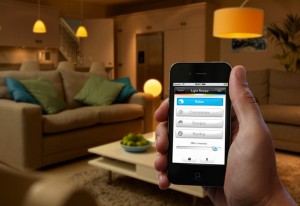 But LEDs can do so much more than just give you ‘white’ light. With LEDs you can adapt both the colour and brightness in order to achieve the effect you want. With dimmable LED bulbs, you can control the amount of light to create the perfect atmosphere. And smart LEDs make it possible to easily personalise your lighting via your smart phone or tablet.
But LEDs can do so much more than just give you ‘white’ light. With LEDs you can adapt both the colour and brightness in order to achieve the effect you want. With dimmable LED bulbs, you can control the amount of light to create the perfect atmosphere. And smart LEDs make it possible to easily personalise your lighting via your smart phone or tablet.
The digital age of lighting and the magic of the internet have combined to create a whole new world of possibilities. New lighting innovations are reinventing how you can interact with light through apps, using the extra functionality of LEDs to create flexibility that just wasn’t possible with older technology.
With Hue, for instance, you can control, dim and bathe your house in all the colours of the rainbow. There are also four pre-programmed settings that adjust the lighting to help you relax, read, concentrate or boost your energy. LightStrips, 6.6-foot LED tape, are also available that you can fix to any surface using the included adhesive back. You can stick them almost anywhere, so they’re ideal for under-shelf or under-table lighting, inside an alcove, or above a bed to add ambiance.
Recently the Hue Go App was launched, a fully portable wireless lamp with all of the clever connectivity features of hue. Lighting is clearly no longer just for illumination.

